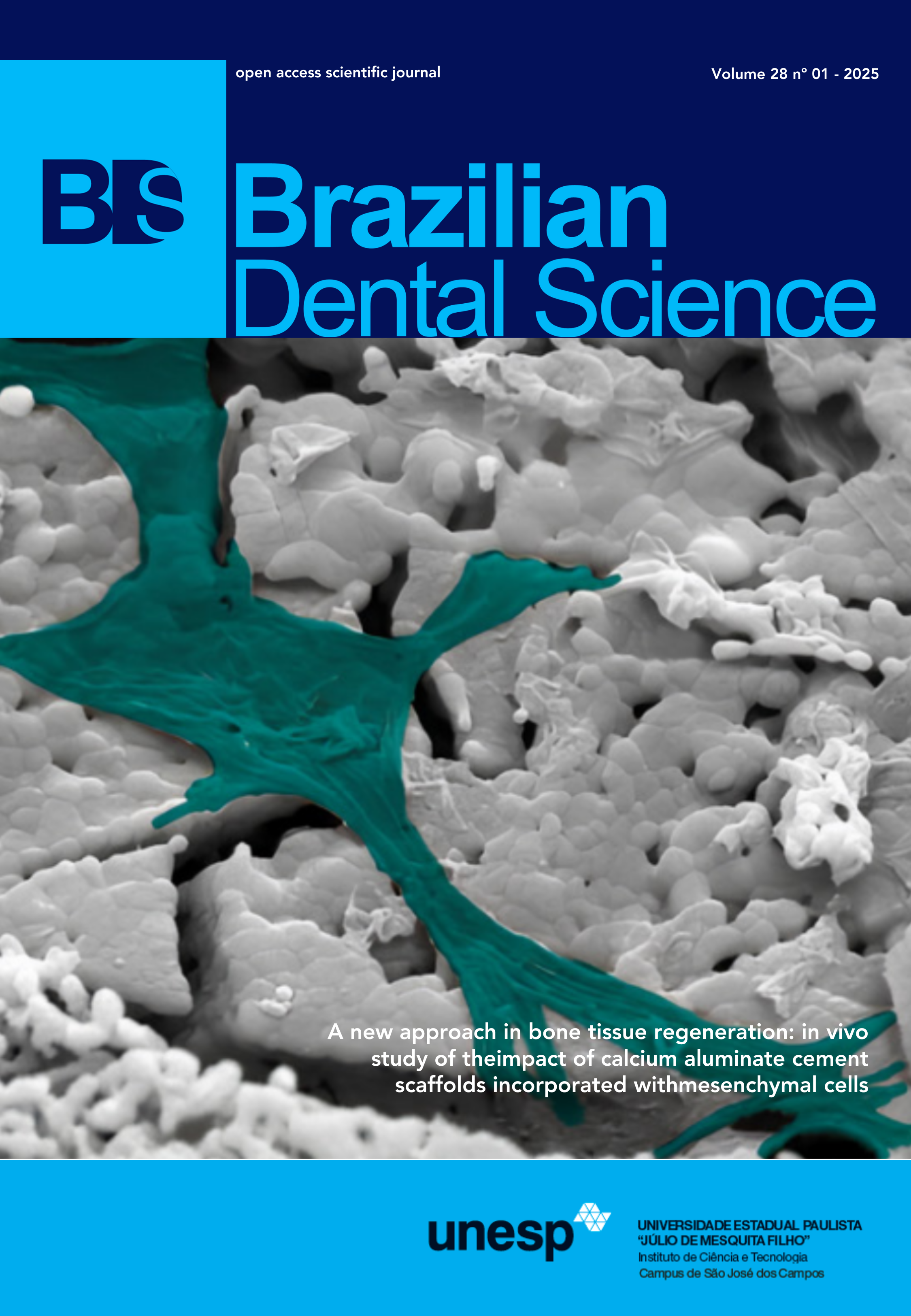Influence of different hydrogen peroxide neutralizer solutions on the dental root morphology
DOI:
https://doi.org/10.4322/bds.2025.e4457Resumo
The consequences of the application of antioxidant agents on the root morphology are yet to be fully known. Objective: Evaluate through scanning electron microscopy (SEM) the dental root morphology after the application of different neutralizer solutions, which were submitted to internal tooth bleaching with hydrogen peroxide 35%. Material and Methods: Eighteen bovine incisor teeth were randomly selected and prepared. Then, they were distributed into 6 groups: CG:without bleaching; B:only bleaching; BSA:bleaching + 10% of sodium ascorbate solution for 3 hours; BCH:bleaching + calcium hydroxide paste for 7 days; BA:bleaching + 10% alpha-tocopherol for 3 hours; BC:bleaching + catalase based gel for 2 minutes. The roots were vertically sectioned and analyzed under SEM at 2000x and 5000x magnification. Two photomicrographs, obtained from the cervical third, were randomly selected from each sample using SEM and subsequently evaluated. The images were verified based on a scoring system for smear removal. The Kruskal-Wallis test and Dunn post hoc with Bonferroni correction was performed. Results: It was observed that B presented dentin tubules with larger diameter, BSA presented smaller and partially obliterated tubules, while BCH and BA presented higher formation of precipitates with irregular surface and obliterated tubules. The BC agent showed a cleaner surface, with opening of the tubules similar to the CG group. Groups B, BC and CG were statistically similar. Conclusion: The different neutralizer substances promoted the deposition of precipitate and obliteration of the dentin tubules, being BC the neutralizer substance which generated less interference on the dental root morphology.
KEYWORDS
Antioxidants; Dentin; Hydrogen peroxide; Microscopy; Tooth bleaching.
Downloads
Downloads
Publicado
Como Citar
Edição
Seção
Licença
Copyright (c) 2024 Brazilian Dental Science

Este trabalho está licenciado sob uma licença Creative Commons Attribution 4.0 International License.
TRANSFERÊNCIA DE DIREITOS AUTORAIS E DECLARAÇÃO DE RESPONSABILIDADE
Toda a propriedade de direitos autorais do artigo "____________________________________________________________________" é transferido do autor(es) para a CIÊNCIA ODONTOLÓGICA BRASILEIRA, no caso do trabalho ser publicado. O artigo não foi publicado em outro lugar e não foi submetido simultaneamente para publicação em outra revista.
Vimos por meio deste, atestar que trabalho é original e não apresenta dados manipulados, fraude ou plágio. Fizemos contribuição científica significativa para o estudo e estamos cientes dos dados apresentados e de acordo com a versão final do artigo. Assumimos total responsabilidade pelos aspectos éticos do estudo.
Este texto deve ser impresso e assinado por todos os autores. A versão digitalizada deverá ser apresentada como arquivo suplementar durante o processo de submissão.




























